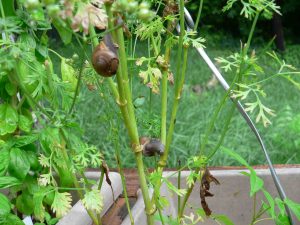The Minnesota Department of Health (MDH) is investigating an increase in Cyclospora infections within the last month. To date, state health officials have identified two outbreaks together involving at least three dozen Minnesotans.
 One outbreak has been identified among people who ate at Sonora Grill in Minneapolis in mid-May. To date, 17 patrons have reported illness. The restaurant is fully cooperating with the investigation, and investigators say they do not have any indication that there is an ongoing risk to patrons.
One outbreak has been identified among people who ate at Sonora Grill in Minneapolis in mid-May. To date, 17 patrons have reported illness. The restaurant is fully cooperating with the investigation, and investigators say they do not have any indication that there is an ongoing risk to patrons.
To better identify the source of infection, MDH investigators want to speak with people who ate at Sonora Grill over the weekend of May 18-May 20, regardless of whether they became ill.
“Even if you have not been sick, your information can help us identify what may have caused these illnesses and prevent future illnesses,” said Trisha Robinson, an epidemiologist supervisor with MDH. “If you ate at Sonora Grill during that weekend of May 18-20, please contact the Minnesota Department of Health Waterborne Diseases Unit at 651-201-4891.”
Infection with Cyclospora, known as cyclosporiasis, is caused by the parasite Cyclospora and is spread through consumption of imported fresh produce; it is not spread person-to-person. Washing of imported produce, or routine chemical disinfection or sanitizing methods, are unlikely to kill Cyclospora. Symptoms typically include watery diarrhea, stomach cramps, nausea, loss of appetite and weight loss. People typically become ill about a week after exposure, but this period can range from 2-14 days. Diarrhea can last several weeks or longer if not treated.
A second outbreak has been linked to Del Monte vegetable trays purchased at Kwik Trip locations. To date, 20 cases have been identified among Minnesotans in this outbreak. Cases report purchasing the vegetable trays at various Kwik Trip locations around the state. Kwik Trip is cooperating with the investigation and voluntarily removed the vegetable trays from their shelves. Consumers should not eat the following products:
Del Monte Vegetable Tray, containing broccoli, cauliflower, carrots and dill dip, 6 oz.
Del Monte Vegetable Tray, containing broccoli, cauliflower, carrots and dill dip, 12 oz.
MDH investigators are working with the Minneapolis Health Department and the Minnesota Department of Agriculture (MDA) on the Sonora Grill outbreak and with MDA and other states on the Kwik Trip outbreak.
“We do not have any indication at this time that the two outbreaks are related,” Robinson said. “Besides these outbreak cases, there are other cases of cyclosporiasis that do not appear to be related to either of these outbreaks, which is not unexpected for this time of year. We typically see increases in Cyclospora infections from May through August.”









